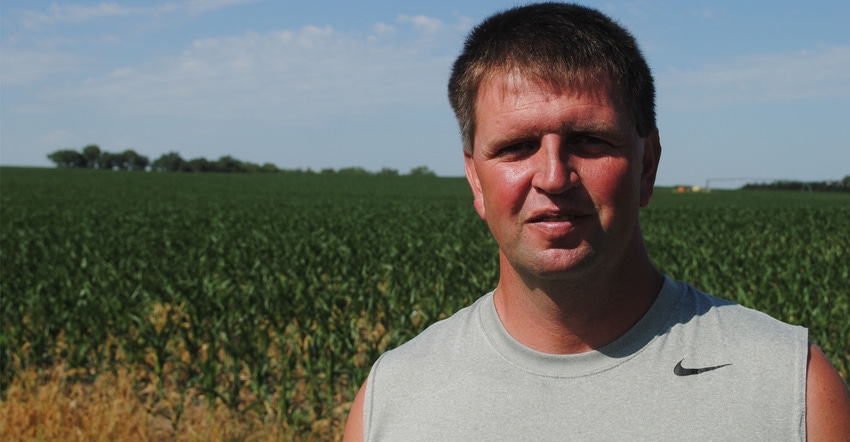
With depressed commodity prices, farmers are looking for premiums wherever they can find them. One of the open markets that pay a premium is non-genetically modified corn and soybeans. It takes more management, and there are challenges, especially in beating tough weeds, but farmers are looking at this as an option for profitability.
Neligh, Neb. farmer, Kenny Reinke, has been raising both non-GMOs and GMOs over the past few years, so he can compare management needs and experiences of both systems.
"The best advice I can give for growing non-GMOs is to be prepared," Reinke says. "Although the opportunities for non-GMO contracts are growing, the slump in commodity prices has increased the number of producers looking for added premiums, which ultimately weighs on the amount of premiums available."
Because non-GMO contract growers have to meet specific purity levels in the grain they market, they must constantly take every step possible to maintain purity. "It starts with ordering seed," Reinke says. "I try to use bulk boxes whenever possible since I use a central-fill planter. This requires knowing exactly what seed goes where and how much is required for a specific field." Reinke uses bags to fill in and provide a clean-out window when switching fields.
"I have noticed that seed companies are getting better at identifying non-GMO and GMO varieties," he adds. "The first year at planting time, I really had to watch seed tags. I load my seed plan into a spreadsheet that then gets uploaded to Dropbox, which gives me the ability to have the information at my fingertips," Reinke explains. "This makes it easier for me to communicate to my dad when he is tendering seed as to exactly which variety to bring. The tags are still double-checked before anything is unloaded."
Technology has made the record-keeping chores even easier and more secure. "Ag Leader monitors and an AgFiniti mobile app on my iPad have made tracking hybrids a much simpler process," Reinke says. "The same monitor does the planting, spraying and harvesting, which gives me incredible traceability."
If the weather permits, Reinke prefers to start planting non-GMO seed first and plant all of those fields before switching to GMO varieties. The same could be said for all field operations.
"With spraying, it's very important," he says. "Not only does spraying all the non-GMO fields together reduce the time required rinsing tanks between fields, but it also reduces the risk of injuring a field with tank contamination."
Of all field operations, harvest is the simplest, according to Reinke. "It still requires management and vigilance," he notes. "With the soybeans yielding less than corn, they are easier to contaminate if you aren't careful because of less volume of grain that you are handling," he says. "A common practice for me has been to dump the first load as cleanout that will not be used to fill the contract. This helps to completely clean any leftover GMO kernels or seeds from the combine, grain carts and semitrailers from the previous field."
John Meuret, J.E. Meuret Grain Co., Brunswick, Neb., says that growing non-GMO crops has become more popular because of the end-user push for non-GMOs, and because of less expensive seed costs and the increase in glyphosate-resistant weeds. Meuret Grain is a local family-owned grain and feed operation offering non-GMO contracts to farmers like Reinke.
"My advice to farmers considering planting non-GMOs is to try it out, but to start small," Meuret says. "We generally see a yield bump for farmers growing non-GMOs," he says. "Part of that reason is that you simply watch the fields closer. It makes you scrutinize those fields because you will worry about getting behind on weeds or insects."
About the Author(s)
You May Also Like




